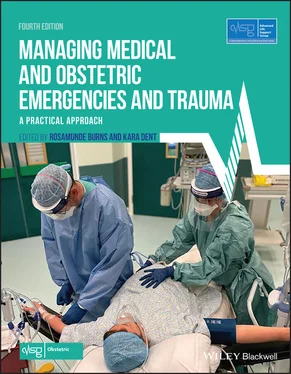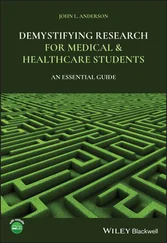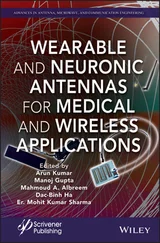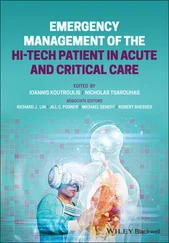3 Retained placenta 30.4 Summary 30.5 Further reading CHAPTER 31: Uterine inversion 31.1 Introduction 31.2 Recognition of uterine inversion 31.3 Management of uterine inversion 31.4 Summary 31.5 Further reading CHAPTER 32: Ruptured uterus 32.1 Introduction 32.2 Incidence and predisposing factors 32.3 Management of ruptured uterus 32.4 Summary 32.5 Further reading CHAPTER 33: Ventouse and forceps delivery 33.1 Introduction 33.2 Training and simulation in obstetrics 33.3 Indications for operative vaginal delivery 33.4 Ventouse/vacuum cup 33.5 Forceps 33.6 Following on from any instrumental delivery 33.7 Supervising an instrumental delivery 33.8 Documentation and debriefing 33.9 Summary 33.10 Online resources 33.11 Further reading CHAPTER 34: Shoulder dystocia 34.1 Introduction 34.2 Clinical risks and outcomes of shoulder dystocia 34.3 Management of shoulder dystocia 34.4 Following delivery 34.5 Medicolegal aspects 34.6 Summary 34.7 Further reading CHAPTER 35: Umbilical cord prolapse 35.1 Introduction 35.2 Clinical management of umbilical cord prolapse 35.3 Documentation 35.4 Summary 35.5 Further reading CHAPTER 36: Face presentation 36.1 Introduction 36.2 Clinical approach to face presentation 36.3 Summary 36.4 Further reading CHAPTER 37: Breech delivery and external cephalic version 37.1 Introduction 37.2 External cephalic version 37.3 Vaginal breech delivery 37.4 Failure to deliver 37.5 Medicolegal matters 37.6 Summary 37.7 Further reading CHAPTER 38: Twin pregnancy 38.1 Introduction 38.2 Clinical approach to a twin pregnancy 38.3 Intrapartum management of vaginal twin deliveries 38.4 Communication and team working 38.5 Summary 38.6 Further reading CHAPTER 39: Complex perineal and anal sphincter trauma 39.1 Introduction 39.2 Assessment of perineal trauma 39.3 Repair of trauma 39.4 Training 39.5 Summary 39.6 Further reading CHAPTER 40: Symphysiotomy and destructive procedures 40.1 Introduction 40.2 Symphysiotomy 40.3 Destructive procedures 40.4 Summary 40.5 Further reading CHAPTER 41: Anaesthetic complications in obstetrics 41.1 Introduction 41.2 Difficult intubation 41.3 Regional blocks (epidural and spinal anaesthesia and analgesia) 41.4 Complications of regional anaesthesia 41.5 Complications due to local anaesthetic drugs 41.6 Serious immediate complications of local anaesthetic drugs 41.7 Complications of opioids 41.8 Complications of technique 41.9 Neurological damage 41.10 Effects of complications on the fetus 41.11 Summary 41.12 Further reading CHAPTER 42: Triage 42.1 Introduction 42.2 Assessment of the pregnant woman 42.3 Scenarios 42.4 Summary 42.5 Further reading CHAPTER 43: Transfer 43.1 Introduction 43.2 ACCEPT approach 43.3 Common coordination problems 43.4 Summary 43.5 Further reading CHAPTER 44: Consent matters 44.1 Introduction 44.2 Sufficient information 44.3 Capacity 44.4 Voluntarily given consent 44.5 Who can obtain consent? 44.6 Summary 44.7 Further reading
21 References and further reading
22 Index
23 End User License Agreement
1 Chapter 2 Table 2.1 Number of maternal deaths from obstetric injury, 1952–1954 Table 2.2 Estimated maternal mortality rates by ethnic group, England 2016–... Table 2.3 The changes in direct deaths reported to the CEMDs, 1952–2018 Table 2.4 The rise in indirect deaths: maternal deaths notified to the CEMD... Table 2.5 Causes of maternal deaths worldwide
2 Chapter 4 Table 4.1 Types of errors Table 4.2 Elements of communication
3 Chapter 5 Table 5.1 Physiological changes and normal findings in pregnancy Table 5.2 Red flag symptoms and signs Table 5A.1 Blood gases in non‐pregnant and pregnant women Table 5A.2 Safety of different imaging techniques
4 Chapter 6 Table 6.1 Severity of blood loss during maternal haemorrhage
5 Chapter 7 Table 7.1 Organ damage caused by sepsis
6 Chapter 8 Table 8.1 Typical flow rates under gravity through intravenous peripheral c...Table 8.2 Common blood components and their use in obstetricsTable 8.3 Different classes of blood loss with resulting physiological indi...
7 Chapter 10Table 10A.1 LMA sizes and inflation volumes
8 Chapter 12Table 12.1 Presentation and features of amniotic fluid embolism (AFE)
9 Chapter 13Table 13.1 Risk factors for venous thromboembolism (VTE)Table 13.2 Incidence of clinical findings in pulmonary embolism
10 Chapter 14Table 14.1 Acceptable preductal saturation levels(SpO 2)Table 14.2 Acceptable preductal saturation monitoring (SpO 2) in premature n...
11 Chapter 19Table 19.1 GCS scoring
12 Chapter 22Table 22.1 The ‘rule of nines’
13 Chapter 25Table 25.1 Possible causes of headache
14 Chapter 27Table 27.1 Levels of magnesium sulphate at which adverse effects occur
15 Chapter 28Table 28.1 Estimated blood loss and proportional volumes
16 Chapter 34Table 34.1 Risk factors for shoulder dystocia
17 Chapter 41Table 41.1 Recommended safe doses for common local anaestheticsTable 41.2 High spinal block signs and symptoms
18 Chapter 42Table 42.1 Major incident triage categoriesTable 42.2 Labour ward board
1 Chapter 2 Figure 2.1 Deaths from haemorrhage reported to the CEMDs, 1976–2018 Figure 2.2 Maternal mortality from venous thromboembolism, 3‐year rolling ra...
2 Chapter 3 Algorithm 3.1 Structured approach to emergencies in the obstetric patient
3 Chapter 4 Figure 4.1 The ‘Swiss cheese’ model Figure 4.2 Similar package design of two different medications
4 Chapter 5 Algorithm 5.1 Scottish national MEWS chart: (a) front of MEWS chart
5 Chapter 6 Algorithm 6.1 Shock Figure 6.1 (a) Manual uterine displacement in the pregnant woman. (b) Fiftee... Figure 6.2 Clinical parameters following increasing blood loss in the pregna...
6 Chapter 7 Algorithm 7.1 The Sepsis Six Figure 7.1 Approach for implementation of the new WHO definition of maternal... Figure 7.2 Sepsis Trust UK Sepsis Screening Tool for Acute Assessment
7 Chapter 8 Figure 8.1 Sites for IO needle placement: tibial and humoral
8 Chapter 9 Algorithm 9.1 Cardiac disease in pregnancy.Figure 9.1 Causes of maternal death 2016–2018Figure 9.2 Inferior and lateral STEMI. There is ST elevation in leads II, II...Figure 9.3 Total occlusion of the ostium of the circumflex artery (a), with...Figure 9.4 Think AortaFigure 9.5 Types of dissection per Stanford and DeBakeyFigure 9.6 Axial CT angiogram of aortic dissectionFigure 9.7 Bat wing or butterfly sign in pulmonary oedemaFigure 9.8 Four chamber zoomed image of mitral regurgitation with colour Dop...Figure 9.9 Short PR interval with a wide QRS complex and slurred onset of th...
9 Chapter 10Figure 10.1 Head tilt/chin liftFigure 10.2 Jaw thrustFigure 10.3 Oropharyngeal airwayFigure 10.4 Anatomical landmarks for surgical cricothyroidotomyFigure 10A.1 Oropharyngeal airway in situFigure 10A.2 Pocket mask in situ using a jaw thrust techniqueFigure 10A.3 Inserting a laryngeal mask airwayFigure 10A.4 Laryngeal handshakeFigure 10A.5 Surgical cricothyroidotomy kit
10 Chapter 11 Algorithm 11.1 Adult advanced life support (modified for pregnancy)Algorithm 11.2 Adult basic life support in community settingsFigure 11.1 Obstetric cardiac arrest
11 Chapter 12 Algorithm 12.1 Amniotic fluid embolism
12 Chapter 13 Algorithm 13.1 Pulmonary thromboembolism
Читать дальше












